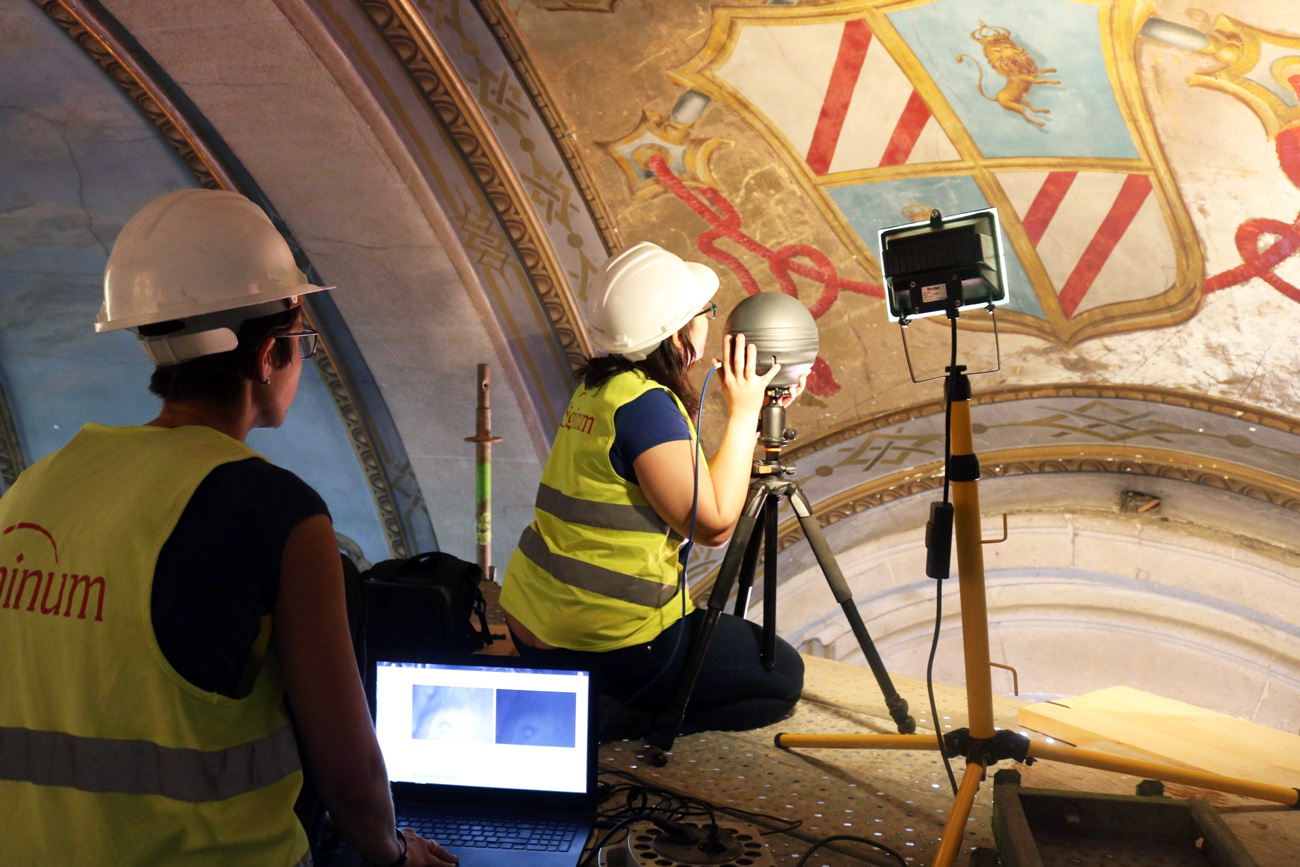The work of conservation and restoration that is taking place in the Basílica of Bom Jesus is having precious help of new technologies. A multispectral camera allows, without causing damage, to perceive what kind of interventions were performed in the past and what the original paintings were. On the other hand, humidity and temperature sensors are constantly monitoring the environment inside the temple in order to take preventive measures for the future. The first phase of the work is carried out, and the second phase is taking place in the main chapel and in the transept. The last phase will focus on the temple ship, according to the company responsible for the works, the work will be done within the stipulated deadline, that is, in June next year.
The interior of the chancel and transept of the Basílica of Bom Jesus do Monte is truly unrecognizable.
An authentic web of scaffolding, with a height of 28 meters, has been woven over weeks so that the technicians of Signinum – Cultural Heritage Management, can work safely.
According to Diário do Minho, the company’s supervisor ensures that, begun in June, «the works are taking place within what was planned», work phases such as the instalation of the yard and scaffolding, the structural revision of the lateral altars, the cleaning of surfaces, the stabilization of metallic elements and the fixing of decorative paints have already been completed.
According to Luís Campos, the works have counted with the precious help of new technologies, like a spectral camera that was born in the laboratory of the Signinum. This innovative instrument has been used in the diagnosis and identification of pathologies and in the validation of the treatments that are being performed.
«Because it is an equipment that is non-invasive, does not destroy and allows to have information in real time,e it is an asset for this type of interventions. And, in fact, it helps us to discover very insteresting details throughout the course of the intervention», he said.
In addition to this technology, Signinum has given way to all the space in which it is working with a temperature and humidity monitoring and control system.
«This is important because we as technicians need to understand the temperature and humidity variations over time so that we can take preventive action in relation to the degradation of the materials themselves. And in fact, we have here, even at this time of year, very high humidity levels», said Luís Campos.
In addition, he underlined, as part of what is one of the obligations of the constract, the company has to carry out a post-work maintenance plan, and this data now collected is information considered vital to help the rigorous elaboration of the plan for the needs of all the materials and supports that integrate the artistic filling of the Basílica of Bom Jesus.
In addition, Signinum is also conducting a whole set of analyzes in a more variant of the intervention that will enable more knowledge, more information about the assets being handled. «And this information is absolutely essential. The more and better we know the goods we are dealing with, the more appropriate the treatments we can apply in each of the circumstances that arise in the course of work» , he added.
The works have already brought good surprises to the technicians, especially in the sacristy [see box ]. And the analysis also made it possible to realize that there were intervations over time, some better and some worse. For example, in the red cloths, to imitate the apricots, it is noticed today there are three types of red.
As for the phasing of the work, the first phase of the intervention has already been completed and focused on the chapel of the Senhor do Monte, which is now functioning as an improvised sacristy.
The secound phase is the one that is taking place at the intervene in the main chapel and in transept of the Basílica of Bom Jesus.
When this phase is finished, the third and final phase is followed with a intervation taking place in the nave of the temple.
The works, says Luís Campos, are expected to be completed in June of next year.
Until then, all conditions will be created so that the Basílica of Bom Jesus can continue to be visited by the people and the celebration of mass.

